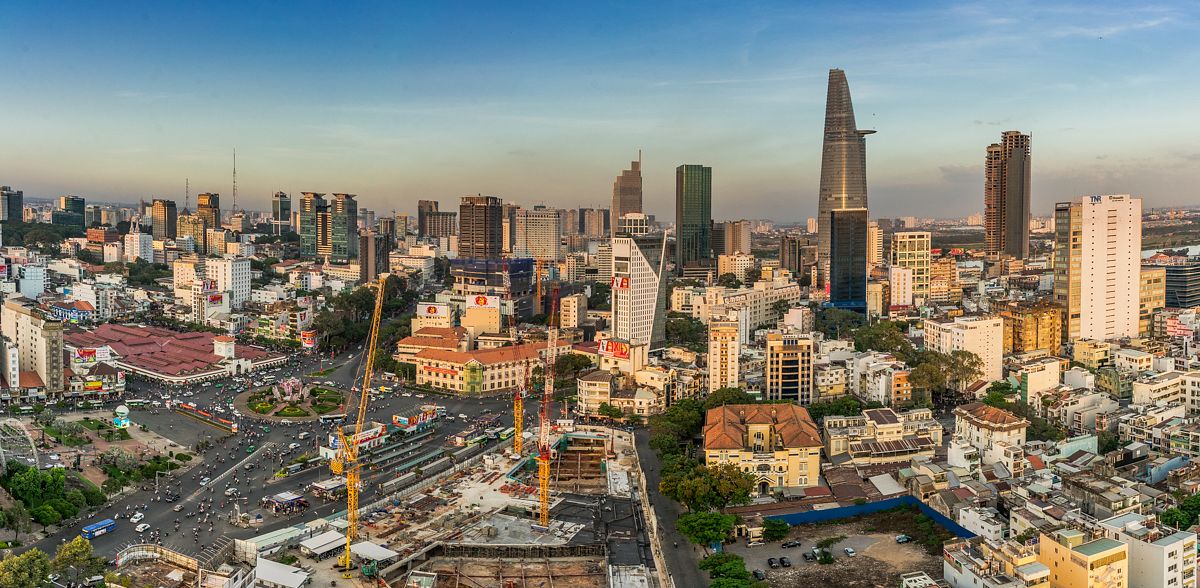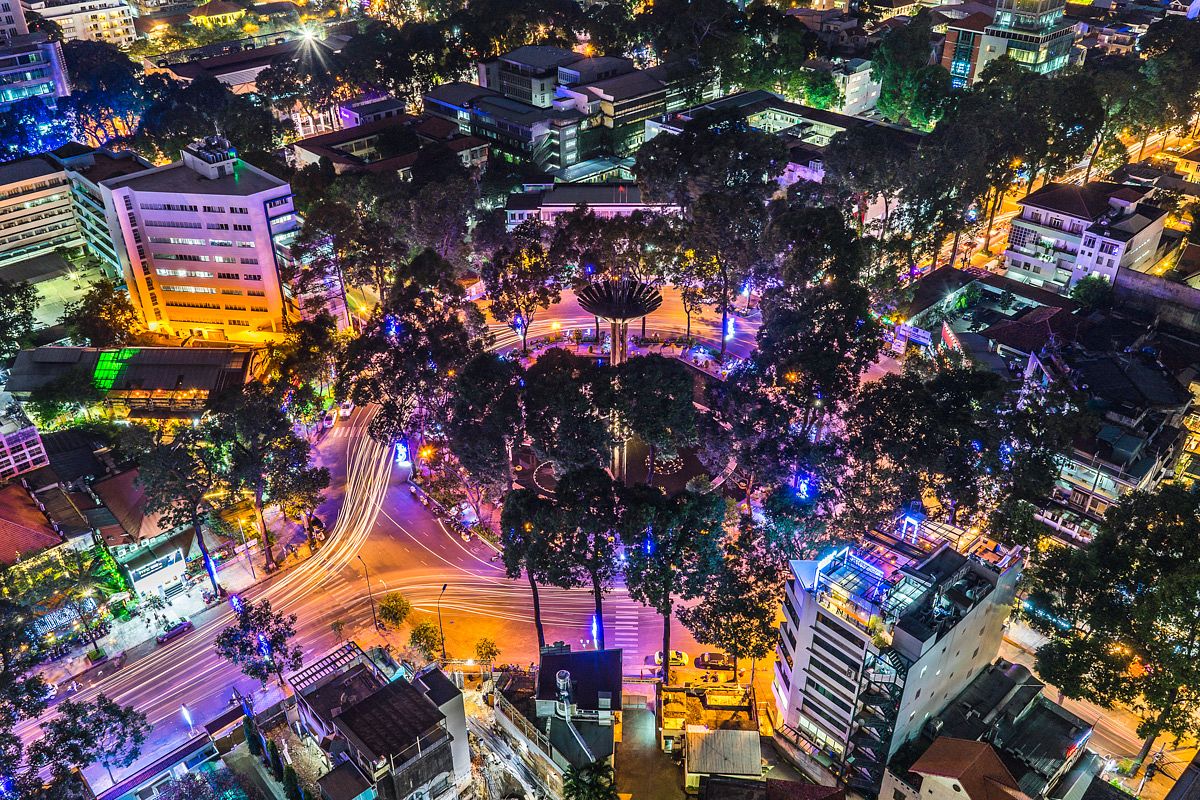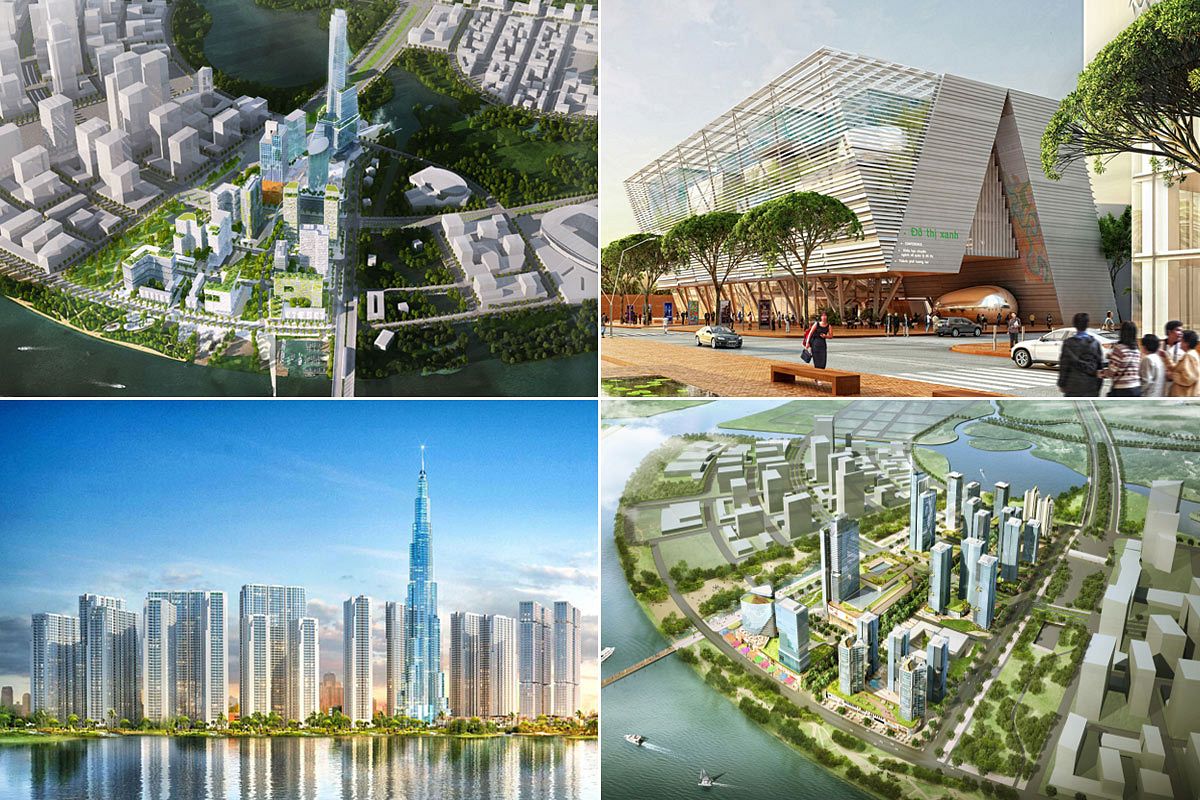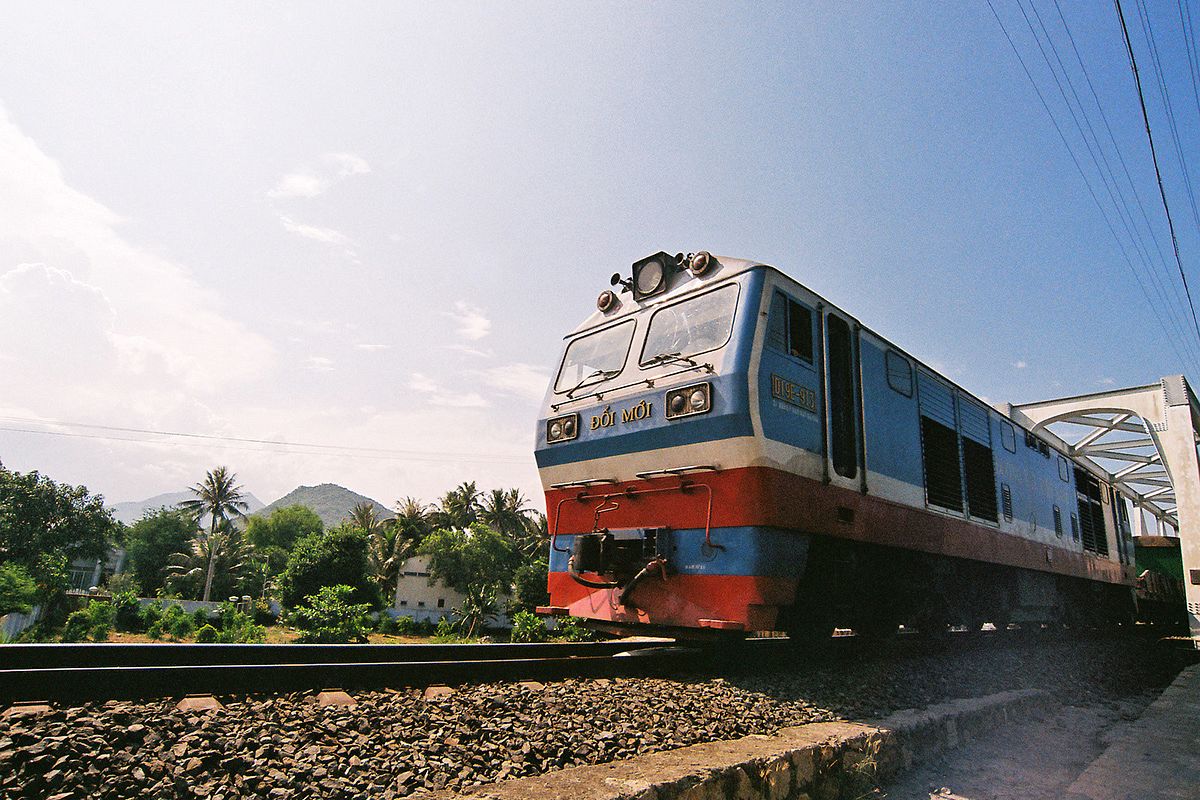Over the past decade, Saigon has transformed almost beyond recognition.
Today, the city's increasingly modern skyline morphs by the month with high-rise apartments, skyscrapers and commercial projects growing like weeds to tower over the modest shophouses and wide colonial structures of the city's past.
As these concrete giants spring up left and right, rooftop bars have also begun to occupy the city's taller buildings, affording new vantage points to accompany the breakneck development. From above, the sprawl of the city becomes all the more apparent, as do the crossroads at which tradition and modernity meet in Saigon's urban landscapes. For better or for worse, the landscape of the southern hub is changing before our eyes.

Saigon's rapidly expanding downtown skyline.

District 1, seen from Nguyen Du Street.

The sparkling new Vietcombank building on Ton Duc Thang Street, District 1.

Looking north from the downtown area into District 3 and Phu Nhuan District.

Nha Be and Binh Chanh Districts remain largely rural yet taller buildings are starting to play a more prominent role in the city's southern skyline.

The sun sets over Districts 3 and 5.

An airplane passes over Phu Nhuan District as it approaches Tan Son Nhat International Airport.

Binh Chanh and Nha Be as well as Districts 7 and 8 appear to be next on the list of rapidly developing Saigon neighborhoods.

Urban density in District 3.

Saigon's iconic Ben Thanh Market stands in contrast to District 1's rapid modernization.

Taller buildings rise above a sea of traditional dwellings in Districts 3 and 5.














